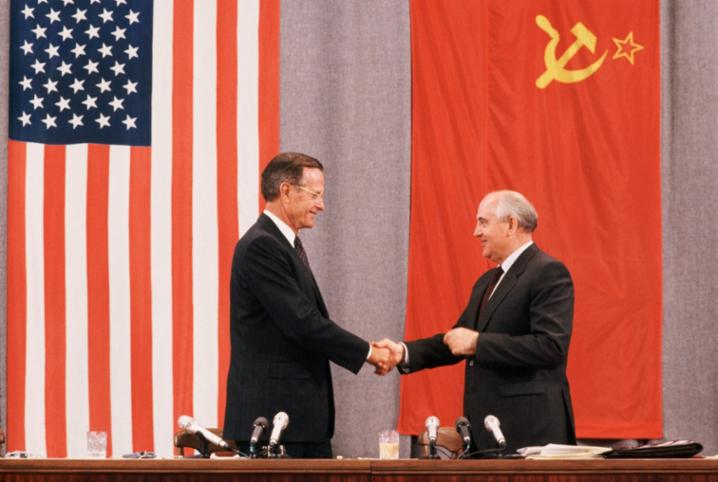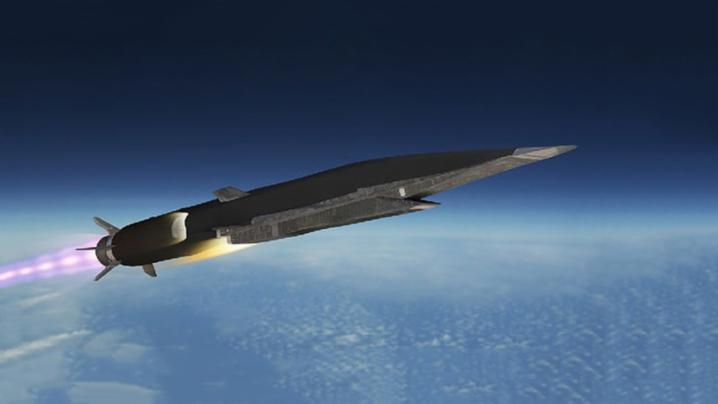Why should NATO Allies still care about nuclear deterrence? In the age of increasingly capable conventional munitions, cyber warfare and autonomous robots, are nuclear weapons not just a relic of the Cold War that have now ceased to be relevant? Why are these weapons still deployed on the territory of a peaceful Europe?
These are questions I often hear from activists, publics and the press. At a time when discussions of lethal autonomous weapons, drone swarms and the weaponisation of outer space make modern warfare seem like a sci-fi thriller, nuclear weapons can seem as retro as a Sony Walkman or landline telephone. And yet, nuclear-armed nations such as Russia and China are once again investing heavily to create more sophisticated and diverse nuclear arsenals, North Korea is continuing its nuclear expansion apace, and Iran is once again making headlines for its nuclear developments.
Nuclear weapons have been the foundation of NATO’s collective security since its inception. For over 70 years, both the national arsenals of the NATO nuclear weapons states – the United States, the United Kingdom and France – and the US nuclear weapons forward deployed in Europe have provided deterrence for the Alliance and reassurance for Allies. NATO heads of state and government have repeatedly affirmed that NATO is a nuclear alliance and will remain so as long as nuclear weapons exist.
Quite simply, we still have nuclear weapons because nuclear deterrence is still necessary and its principles still work.
Post-Cold War reductions
At the height of the Cold War, the United States deployed approximately 7,300 nuclear weapons in Europe providing extended deterrence and security guarantees to NATO Allies. Today, the number of US nuclear weapons deployed in Europe in support of NATO has been reduced by 90 per cent since the end of the Cold War. Between 1991 and 1993 alone, the United States removed around 3,000 nuclear weapons from Europe. Between 2000 and 2010, the United States continued to reduce the number of nuclear weapons deployed in Europe and consolidated them at fewer bases. That limited posture remains the same to this day.
The enactment of the Intermediate-Range Nuclear Forces (INF) Treaty in 1987, followed by the Strategic Arms Reduction Treaty (START) in July 1991, and the Strategic Offensive Reduction Treaty (SORT) in 2002 provided a steady drum beat of strategic nuclear weapons reductions between the United States and Russia, locking in steadily lower and lower numbers through treaty implementation.

Presidents George H. W. Bush and Mikhail Gorbachev shake hands at the end of a press conference after signing the START I agreement for the mutual elimination of the two countries’ strategic nuclear weapons – Moscow, 31 July 1991. © Corbis / Peter Turnley
But the most significant reduction in nuclear weapons in Europe took place in September 1991 and was not governed by an arms control treaty at all. On 27 September 1991, President George H. W. Bush outlined sweeping changes to the US nuclear force posture in response to the collapse of the Soviet Union and called on leaders in the Kremlin to reciprocate in kind. Days later, President Mikhail Gorbachev announced that the Soviet Union would take similar steps to reduce, dismantle and destroy much of its non-strategic nuclear forces.
These Presidential Nuclear Initiatives (PNIs) resulted in the most significant reduction of tactical – or non-strategic – nuclear weapons in the European theatre. The United States destroyed approximately 2,000 ground-launched nuclear artillery shells and short-range ballistic missiles; removed all tactical nuclear weapons on navy surface ships, attack submarines and naval aircraft; destroyed all nuclear depth bombs; de-alerted strategic bombers; and cancelled the planned modernisation of some nuclear systems.
Soviet and subsequently Russian leaders pledged to eliminate all nuclear artillery, nuclear warheads for tactical missiles, and nuclear land mines as well as remove tactical nuclear weapons from ships, multipurpose submarines and naval aircraft. These weapons, along with nuclear warheads from air defence missiles, were to be put into central storage and a portion would be destroyed. Additionally, a third of Russia’s sea-based tactical nuclear weapons and half of its ground-to-air nuclear missile warheads were to be eliminated, along with half of the Russian airborne tactical nuclear weapons stockpile. By 2010, Russia had consolidated its tactical nuclear weapons at “central storage facilities” in Russia; removed tactical nuclear weapons from its ground forces; and dramatically cut the tactical nuclear arsenal of the air force, missile defense troops and navy, reducing the number of non-strategic nuclear weapons by around 75 per cent.
The combined reductions of the United States and Russia were the most transformative change to the nuclear posture in Europe, resulting in a significant reduction in the number of nuclear weapons deployed and the easing of military tensions.
Unfortunately, the gains made in the mid-1990s did not translate into sustained and verifiable progress in dismantling stockpiles of non-strategic nuclear weapons. While the United States unilaterally reduced its non-strategic nuclear forces over time, there is a debate about whether or not Russia fully implemented its commitments – as these political statements and actions did not include verification or compliance mechanisms.
A renewed challenge from Russia
In recent years, Russia has chosen once again to rely on nuclear weapons deployed in the European theatre, in order to counter what it perceives as NATO’s conventional superiority. As part of its overall military transformation, Russia has modernised about 80 per cent of its strategic nuclear forces since the early 2000s. The United States is only now embarking on its own 20+ year modernisation programme, including extending the life of the B61 gravity bombs deployed to Europe for NATO’s nuclear sharing mission.
Because of this, Russia is better poised rapidly to add new strategic warheads on modern deployed intercontinental ballistic missiles (ICBMs), submarine-launched ballistic missiles and bombers, when treaty-imposed constraints from New START (2010) expire between 2021 or 2026. This is particularly significant given that there is little progress on negotiating a new arms control treaty regime for strategic systems before New START ends.
Additionally, Russia is developing new types of missile systems such as the strategic-range hypersonic glide vehicle Avangard and the theatre-range Tsirkon hypersonic cruise missile, which Russia is testing and fielding on a variety of delivery platforms. It is also developing an air-launched ballistic missile, the Kinzhal, which Russia claims will have a range of about 2,000km. Hypersonic weapons fly at super-high speeds, at low altitudes and have the capability to manoeuver during flight – a combination of capabilities that make hypersonic missiles difficult to track and nearly impossible to defend against. While the United States has begun to increase its own investments into hypersonic missile systems development, it is lagging behind Russia (and China).

Russia successfully test-launched its Tsirkon hypersonic cruise missile from a ship for the first time, in January 2020, according to the TASS news agency. Pictured: rendering of a Russian 3M22 Zircon/3M22 Tsirkon hypersonic cruise missile in flight. © DefPost
In addition to hypersonics, Russia is in the process of developing “novel” nuclear systems such as a nuclear-powered nuclear cruise missile and an underwater unmanned nuclear torpedo – these can be used to intimidate, coerce and attack NATO Allies, with little warning or ability to respond. Russia’s rationale for these weapons is unclear. However, it is prudent for NATO to assess the ability of its own capabilities in light of the new Russian systems.
But perhaps the largest discrepancy between NATO and Russia is in the area of tactical or non-strategic nuclear weapons. These include systems armed with lower-yield nuclear warheads, such as air-, sea- and ground-launched cruise missiles. Russia now has a significant arsenal of missile systems that are designed to be dual-capable for either conventional or nuclear weapons delivery. These can reach the territory of all of NATO Europe either from land, sea or air. With its comparatively large arsenal of non-strategic nuclear warheads – estimated to be between 1500 and 2000 in storage depots, compared with an estimated 150 to 200 US gravity bombs stored in vaults in Europe, according to open source information – Russia poses a renewed challenge to NATO’s regional deterrence and defence activities.
Maintaining effective nuclear deterrence
Given this changing security environment – and until our competitors and potential adversaries are ready and willing to forgo nuclear weapons themselves – NATO must be able to deter nuclear threats and respond to nuclear use by Russia in order to safeguard the security of the almost one billion people who live under the NATO umbrella.
As NATO’s heads of state and government have agreed – and often reiterate – NATO’s nuclear weapons are intended to “preserve peace, prevent coercion, and deter aggression”. This includes reassuring Allies of the strong transatlantic commitment to collective security, demonstrated by NATO’s nuclear sharing arrangements in which European and North American Allies share the risks and responsibilities of nuclear deterrence. It also sends a strong signal to Russia that they will not achieve their objectives by resorting to even the limited use of nuclear weapons in a conflict by showing that NATO has the capability and resolve to impose unacceptable costs greater than any intended gain and, in short, that any nuclear attack by Russia will not succeed.
NATO Allies remain firmly committed to the goal of a world without nuclear weapons and to promoting arms control, nonproliferation and disarmament. But NATO will also remain a nuclear alliance as long as nuclear weapons exist. NATO will continue to ensure the effectiveness of our deterrence and defence capabilities and posture, including ensuring that our nuclear deterrent remains safe, secure and effective. In short, nuclear weapons continue to play a vital role in NATO security, to preserve peace, prevent coercion and deter aggression.
